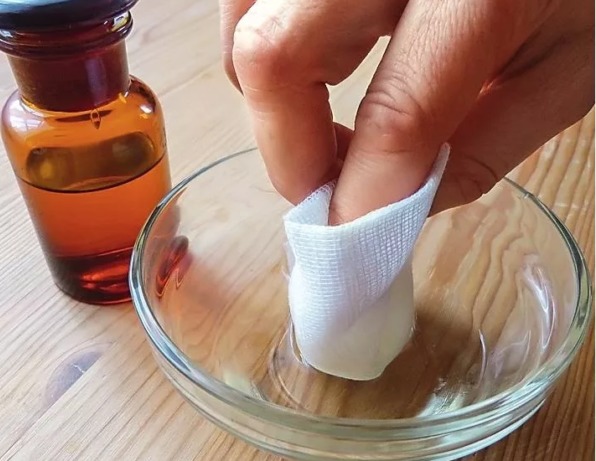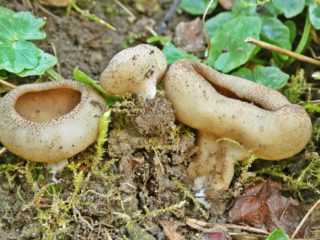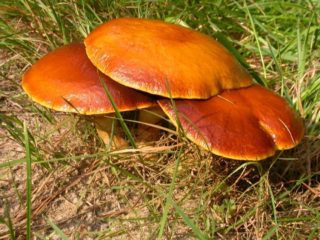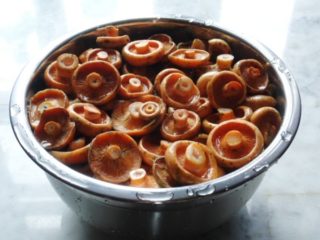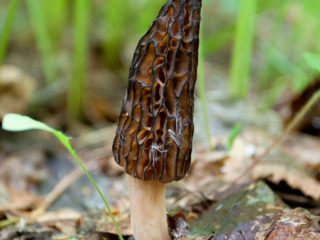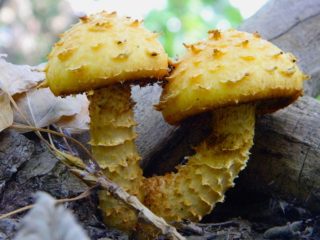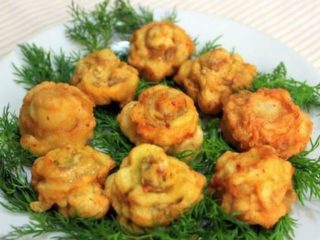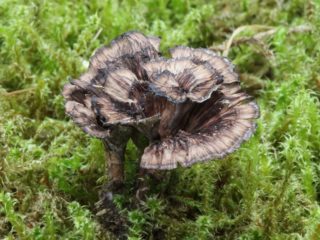Content
Discina thyroid is an early fruiting mushroom. The first specimens are found in March or April, and colony growth continues until June. Based on its appearance and color, the discomycete is called pink-red saucer. In biological reference books the fungus is designated as Discina perlata.
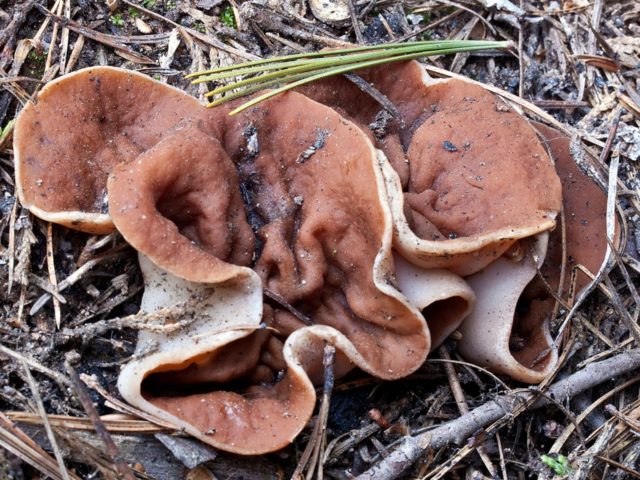
Discina thyroid - a large mushroom with wavy concave edges
Description of thyroid disease
The early spring marsupial species appears immediately after the snow melts and tolerates light frosts without damaging the fruiting body.The growing season is slow; Discina thyroid reaches biological maturity in 2-2.5 weeks. The mushrooms are large in size, individual specimens grow up to 15 cm in diameter. At first, discina is light brown with a pink tint, then dark chestnut. Fruiting bodies are black in color.
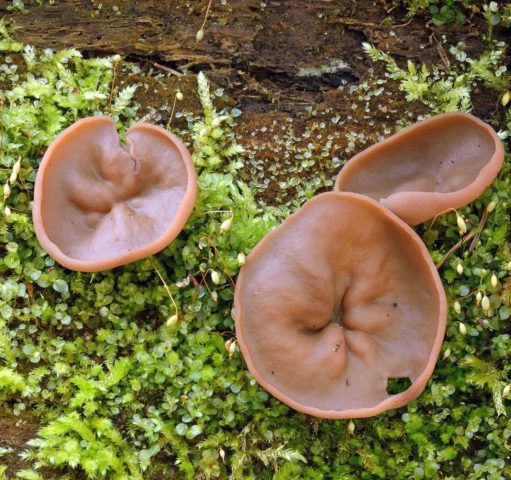
Color changes as you get older
The external characteristics of the pink-red saucer are as follows:
- At the beginning of growth, the shape of the apothecium is cup-shaped or barrel-shaped, rounded with edges turned inward. Then it becomes flattened in the shape of a saucer, widely spread, with large radial folds. The edges are uneven, wavy, concave.
- The spore-bearing layer is located on the outer part of the fruiting body, therefore, during the process of spore maturation, the color of the thyroid disc changes.
- The lower surface is sterile, smooth matte, light brown or dark beige in color with pronounced veins.
- In the central part there are blunt ribs from the stem, which reach the edge of the surface.
- The false stalk is very short – up to 3 cm, ribbed, and is mainly located in the substrate. Often it is absent or forms in the form of a rudiment.
- The pulp is thin, very fragile, cartilaginous, but quite juicy. In young specimens it is white with a gray tint. An adult limpet is light brown.
Doubles and their differences
Mycological reference books do not indicate a poisonous double; Discina does not have one. According to morphological data, there is a similar species - Discyotis veinata.
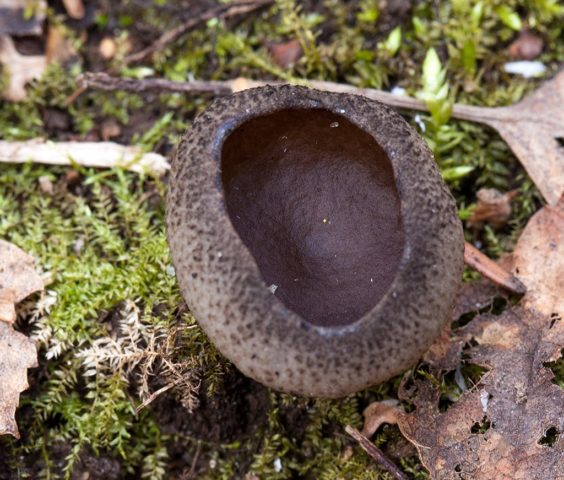
Discyotis veined with dark scales on the surface
An early mushroom of the conditionally edible category. Color ranges from dark brown to black. Grows in groups in open areas of mixed forests of temperate climates.The double differs from Discina thyroid in the presence of small dark gray scales on the lower part of the apothecia and a pronounced odor of chlorine.
The danger is represented by the common line, which outwardly resembles thyroid distina. Both species belong to the Discinaceae family, and the fruiting time is also the same.
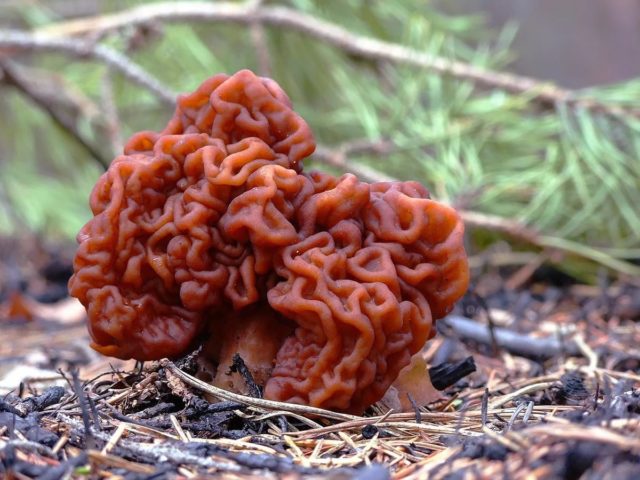
An ordinary stitch with a shallow stem and a folded surface
At the beginning of growth, Discina thyroid differs from Stroga in its relatively smooth fruiting body. Adult mushrooms are similar in appearance with uneven edges and a folded surface. But the stitch has a short, easily identifiable leg, the upper part is not spread out, without borders at the edge.
Where and how does it grow
Discina thyroid is a saprotrophic species that grows in pine forests and mixed forests, where coniferous trees are often found. The distribution area is the entire European part of the Russian Federation, except for the northern regions, as well as the Central and Southern regions. The mycelium is located on rotting wood or in the ground. A prerequisite for fruiting of Discina thyroidis is a sufficient amount of light and moist soil. Prefers to settle on disturbed soil after clearing, is the first to appear at fire sites, and is less common on the sides of forest roads and the edges of ditches. It grows in groups, on damaged soil it reaches its peak yield in the third year of fruiting, and can completely cover fairly large areas.
Is the mushroom edible or not?
Discina thyroid is included in the last group in terms of nutritional value and is classified as conditionally edible. Apothecia is tasteless, with a faint mushroom odor. The main advantage of the species is its early fruiting.The pulp is very fragile and does not tolerate transportation well. If you choose the wrong collection container, you can bring home small crumbs.
The fruit bodies are universal in use; the tender pulp, if handled properly, is suitable for drying, frying, stewing and preparing first courses. Early spring species are rarely taken for winter harvesting. If the harvest is plentiful, discina can be frozen and used at the end of summer for pickling with other mushrooms.
How to prepare thyroid distina
Remains of litter and soil are removed from the disc and washed. Then boil in salted water for 10 minutes. The decoction is unsuitable for further use; it is poured out. If the processing technology is followed, the saucer turns out to be tender and pleasant to the taste.
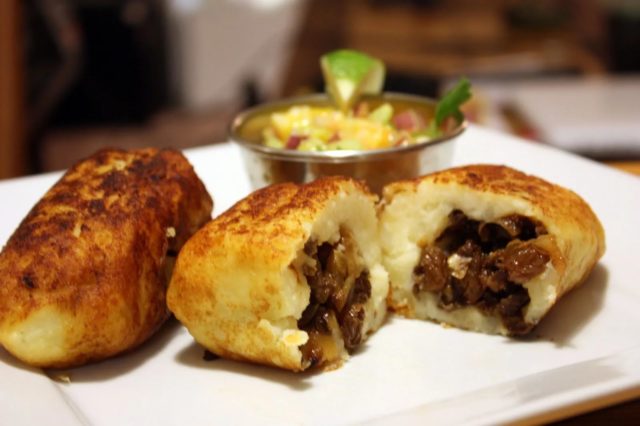
Classic recipe for making potato zrazas with thyroid disease
Components:
- 300 g of fruiting bodies;
- 0.7 kg potatoes;
- 2 pcs. eggs;
- 1 onion;
- salt, spices;
- 1.2 tbsp. flour;
- oil for frying.
Cooking technology:
- After boiling, excess moisture is removed from the mushrooms; this can be done with a kitchen napkin.
- Heat a frying pan with oil, sauté the onions, add fruit bodies, and fry for no more than five minutes.
- The potatoes are peeled, boiled, and allowed to cool.
- Make a puree, add 1 tbsp. l. vegetable oil, flour, egg, spices.
- Stir until smooth.
- They make flatbreads, add filling, and shape them into cutlets.
- Fry the zrazy in a hot frying pan for two minutes on each side.
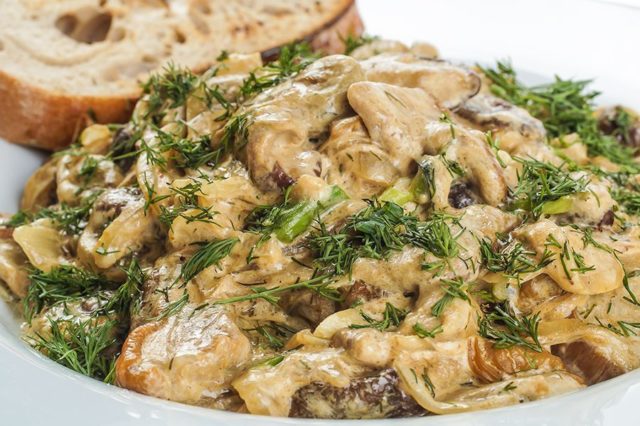
You can cook distina in sour cream
For the dish you will need:
- 0.5 kg saucers;
- 100 g sour cream;
- 1 PC. medium sized onion;
- salt, ground black pepper;
- 1 clove of garlic;
- 1 bunch of dill;
- 2 tbsp. l. sunflower oil.
Preparation:
- Chop the onion, fry with mushrooms for seven minutes, add spices to taste.
- After five minutes, add sour cream, cover, reduce heat, and simmer for 10 minutes.
- Before completing cooking, finely chop ½ part of the dill and add crushed garlic, mix and simmer for 2-3 minutes.
- Remove the lid and add the remaining dill on top.
Beneficial properties of thyroid discine
Early spring mushrooms differ from late species in their small chemical composition. The fruiting body of the discina contains the substance chitin, which prevents an increase in the level of bad cholesterol by binding fats.
Due to the concentration of chondroitin in the composition, the benefit of thyroid discina lies in the substance’s ability to retain water in cartilage tissue. Mushrooms are used to treat joint pathologies: rheumatism, polyarthritis and osteochondrosis.
For this purpose, prepare a tincture from raw mushrooms (200 g) and vodka (0.5 l) or alcohol. The product is placed in any dark container, except metal, and kept for three weeks.
A tincture based on thyroid discina is used only externally as compresses or for rubbing.
Contraindications for use
It is not recommended to include mushrooms in the diet:
- children under six years old;
- pregnant women and during lactation;
- for pancreatitis, diseases of the digestive system;
- with pathology of the heart or blood vessels.
You can consume it in small quantities, no more than twice a week.
Conclusion
Discina thyroid is an early spring mushroom with low nutritional value. Included in the list of conditionally edible species. The limpet is common in coniferous or mixed forests; it parasitizes the woody remains of pine trees or grows on soil, often damaged. Fruiting bodies are used for all types of processing.
